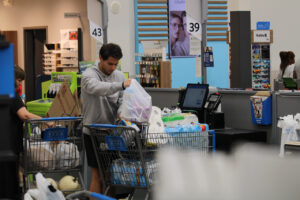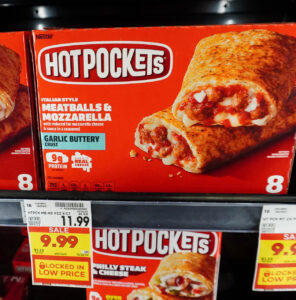
University of Mississippi students and Oxford residents are struggling to keep up with high grocery prices.
Mississippi has the highest grocery tax rate in the United States at 7% and is one of only 13 states to levy a grocery tax, according to Mississippi Today.
The price of groceries in the United States is up 3.2% from 2023, according to the Consumer Price Index. Prices were also up 0.3% from July to August; data for September 2024 will be released on Oct. 10.
Katie Jadin, a UM sophomore from Wisconsin, compared her grocery shopping experience in Mississippi with her home state, where most groceries are exempt from sales tax.
“There is a noticeable difference between the prices in Oxford versus at home, especially when purchasing items such as fruits and vegetables,” Jadin said. “Back at home, these items are fairly priced.”
Jadin said the price difference has affected how she shops for groceries.
“Since things like the fruits and vegetables are outrageously priced, I can’t get as many groceries,” Jadin said. “The grocery tax has noticeably affected my grocery shopping.”
Mary Allen Anderson, a sophomore biology major from Olive Branch, Miss., explained her frustrations with shopping for groceries in a college town.
“It is honestly ridiculous, even more so in a college town,” Anderson said. “College students are already trying to afford school, so it’s upsetting when I go to Kroger for a few meals like ramen and Kraft Mac and Cheese for almost $100 when it will barely last me two weeks.”
Oxford resident Michelle Wigely was unaware of how high the grocery tax was in comparison to the rest of the nation.
“I have always lived in Mississippi, and just like everywhere, the price of groceries has gone up, but I had no idea we had the highest grocery tax in the country,” Wigely said. “It’s unfortunate that the poorest state in the country has the highest grocery tax.”
Laura Pharis, another Oxford resident, has also been feeling the effects of high prices.
“There’s five of us in the family, and I know it’s about $600 at least for all of us (every two weeks). Then there’s school and lunches. I can’t afford to make them anymore,” Pharis said. “I’ve been spending about $100 (more per month).”
Pharis has changed some of her shopping habits in response to the grocery prices by buying more from Larson’s Cash Saver, rather than Kroger.
Lily Crowder, a sophomore accounting major from Ordell, N.J., is a volunteer at Grove Grocery, the UM food pantry. She said demand for food at the pantry has increased.
“We’ve had to put a limit on it. You used to be able to take as much as you wanted,” Crowder said.
Those who utilize the resources of Grove Grocery are now limited to taking 200 ounces of food per visit.
Despite the limit, Grove Grocery still struggles with keeping up its supply, which gets restocked every Sunday.
“We’re barely stocked right now. The day we stock up, we have an influx of everyone come in, xand then it looks like that,” Crowder said.”
Located in Kinard Hall room 213, Grove Grocery offers groceries, toiletries and cleaning products to all Ole Miss students, faculty and staff on Mondays through Fridays from 8 a.m. to 5 p.m. They also take online orders which can be placed at grovegrocery.olemiss.edu.




























